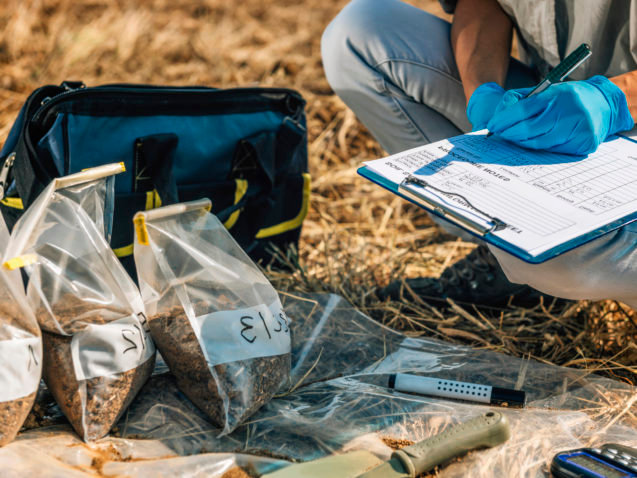Acrylamide is a chemical that naturally forms in various foods during every-day high-temperature cooking. While preventing acrylamide formation in our food is impossible, the food and drink industry is looking at ways to reduce acrylamide as much as possible. We spoke to Sebastian Emig from the European Snacks Association to find out how the snacks industry is accomplishing this.
In 2018 the European Commission Regulation (EU) 2017/2158 set, for the very first time, binding levels for acrylamide for several food categories. Now, nearly 3 years later, the Commission has started discussions on the review of these so-called the ‘Benchmark levels’. Let’s have a look at the effectiveness of the legislation and what we can expect for the future.
Acrylamide is part of the human diet since cooking began
Acrylamide is a chemical which naturally forms in foods as a result of cooking, such as by baking, frying, grilling, or roasting and it is likely that it has been part of human diets since cooking began. What is often overlooked is that, besides cooking food in restaurants and food manufacturers, home-cooking can have a substantial impact on the level of acrylamide humans are exposed to through the diet.
It is important to note that acrylamide is not deliberately added to food, its presence in any such cooked foods is unavoidable.
In its 2015 Scientific Opinion the European Food Safety Authority’s, based on animal data, concludes that acrylamide is a genotoxic carcinogen. However, human studies so far have provided limited and inconsistent evidence of increased carcinogenic risk; therefore, EFSA was unable to set ‘safe limits’ for dietary exposure. In particular, epidemiological associations have not demonstrated acrylamide to be a human carcinogen. A recent study by Eisenbrand (2020) concludes that any genotoxicity of acrylamide occurs at doses that are irrelevant to human dietary exposure.
An effective regulation based on science and good sense!
Despite these uncertainties, the European Commission came forward with a progressive Regulation, which applies from April 2018, which legally requires food businesses to implement mitigation measures to lower the presence of acrylamide and to demonstrate that they are following the ‘ALARA’ principle (As Low As Reasonably Achievable). This is in line with the Council Regulation (EEC) No 315/93.
The mitigation measures set out in the Regulation are based upon current scientific and technical knowledge and have been proven by manufacturers to result in lower levels of acrylamide without adversely affecting the quality and microbial safety of the product.
To support the implementation of the mitigation tools, the Regulation established ‘Benchmark levels’ (BMLs) for specific foods. BMLs are performance indicators used to verify the effectiveness of the mitigation measures and were set for broad categories of foods based upon data collected by EFSA. They were set at approximately the 85th percentile (i.e., it was anticipated that approximately 15% of samples would be above the benchmark level). For potato crisps the benchmark level was set at 750 µg/kg.
The decision not to set maximum levels for potato crisps reflects the significant uncertainties in the risk assessment and the difficulties for businesses of all sizes to manage the issue consistently.
It acknowledges the fact that acrylamide formation is highly dependent on the quality and homogeneity of raw materials, issues which are predominantly directly influenced by seasonality, geography, storage, and other environmental effects such drought and flooding and which cannot be influenced by farmers nor manufacturers.
The Regulation is a global first, but the approach is in line with the international Codex Alimentarius Code of Practice for the Reduction of Acrylamide in Foods (CAC/RCP 67-2009), the US FDA’s Guidance for Industry: Acrylamide in Foods, and both the FoodDrinkEurope Acrylamide toolbox and the associated pamphlets which are targeted specifically at SMEs (the European Snacks Association has played a leading role in the development and reviews of both the toolbox and the pamphlets).
The European savoury snacks sector at the forefront of the industry response
ESA has pioneered acrylamide mitigation in Europe and has regularly collected occurrence data since the discovery of acrylamide in foods in 2002 from its members and shared these data regularly with EFSA, the European Commission and Member States. To date ESA has collected 99,704 observations. This is the largest set of acrylamide data anywhere on the globe and has been shared with independent scientists and statisticians to analyse the data with the objective to further improve the sector’s performance.
The latest peer-reviewed study provides compelling evidence to demonstrate that the legislation is working successfully, and that acrylamide reduction over time is feasible.
However, it also demonstrates that whilst improvements have been made in reducing the number of samples with very high levels of acrylamide, it is not possible to ensure that that levels can be kept consistently below the current BML or that the level should be substantially reduced as part of this current review.
In this sense, setting of Maximum Levels is not implementable and has to be ruled out.
In the meantime, and besides monitoring progress made by manufacturers in acrylamide reduction, ESA continues to foster the development and use of mitigations tools and techniques (best practices) within its membership and beyond, and has produced three videos that can support manufacturers of potato crisps made from fresh sliced potato, as well as dough-based potato crisps, snacks, and crackers, when implementing Commission Regulation (EU) 2017/2158.




